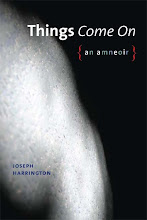As for content, Jen's blog might be a kind of 21st c. georgic. That would complicate the time thing (or does already), b/c it introduces the cyclical, which is spittin distance from the mythic. Personally, I think you can have that alongside the historical (and do). When the climate starts radically altering the seasons due to human activity? That is where the two come together and crash.
And the georgic is another of those complicated genres: is it a real farming manual that's written in poetic form? Or a poem posing as a (faux) farming manual? From the little I know, I'd say Virgil's was the former. As is Jen's, not infrequently.
But the connection between literature (literacy) and agriculture is much older. In fact, arguably writing (viz., cuneiform) was invented to keep track of agricultural commodities. Here is a bit from John Heise's Akkadian Language:
"Already from the 9th millennium onwards clay tokens (Lat. calculi) where used to depict objects and abstract numbers and was widely spread: from present day Sudan to Iran. The clay tokens in various forms and shapes were used as counters. Each type of counter represent e.g. a bull's head, a sheep, a basket, a bar of gold etc. They were, in many cases at least, pictographicallly used: that is, they depicted concrete objects. They have meaning in any language. . . .
"A diacritical mark on a three dimensional token was often not clearly copied on the outside of a clay bulla and had to be inscribed by hand. In the two dimensional writing a symbol like could stand for 'sheep', not a pictogram anymore. Further diacritical marks, like removing a segment could indicate 'ewe' (female sheep) where as removing two segments could be an indication of a sheep in gestation."
And this from Ira Spar, on the Metropolitan Museum of Art web site:
"One of the earliest written texts from Uruk provides a list of 120 officials including the leader of the city, leader of the law, leader of the plow, and leader of the lambs, as well as specialist terms for priests, metalworkers, potters, and others.
"Some of the earliest signs inscribed on the tablets picture rations that needed to be counted, such as grain, fish, and various types of animals. These pictographs could be read in any number of languages much as international road signs can easily be interpreted by drivers from many nations."
(All of which raises the obvious literary-historical question: did the Sumerians blog? . . .)
For Sweetie
-
I won't post my last photos of Sweetie; they were taken for the Humane
Society. She lived in a fenced-off cement lanai about the size of the box
I'm writi...
6 hours ago










